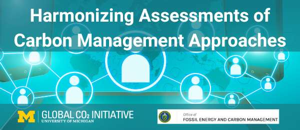The Finnish Government has chosen the bioeconomy as a future growth area of the Finnish economy. The national bioeconomy strategy, published in May 2014, sets ambitious growth targets for the future bioeconomy. The bioeconomy is already an important part of Finland’s economy due to our strong biomass processing industries, and the technology industries serving the whole ecosystem from biomass harvesting to processing. We have an excellent combination of strengths: raw material is plentiful, we have industrial traditions and ecosystems, and very knowledgeable people. The country’s renewable resources can substitute a significant amount of domestic use of fossil resources and provide solutions and products for the rest of the world.
THE BIOECONOMY relies on natural resources, but we must resist taking a pure supply-driven approach. Too often we justify the bioeconomy with the argument that there are plenty of renewable resources that need to be used. From the forest management point of view this is a valid point – in order to maximize the yield and carbon sink, we need to manage the forests and remove trees at different stages. But how do we ensure that there is a demand for all that harvested biomass? How do we maximize the economic, environmental and social impact from the limited renewable resources? These are the questions that we are only starting to address comprehensively.
Rapid generation of new business and regeneration of the existing sectors will be vital for the evolution of the bioeconomy. A majority of the new business will grow along- side the existing businesses of forest, chemical and food industries, agriculture, the construction sector and energy production. Despite all these advances and opportunities, we are still in the early phases of development.
Biomass is not an endless resource. We need to utilize it in a sustainable way. We must develop technologies for resource-efficient use of biomass, produce various products with different values and minimize waste. New innovations, like nanocellulose, open up very exciting possibilities for future biomaterials. There is exciting research going on to expand the limited raw material supply to waste, fast growing biomass like algae and even CO2. Synthetic biology may revolutionize the way we produce chemicals and materials.
VTT has broad expertise in technology and product development and can help companies and society in their transition to the bioeconomy. In this report we have collected highlights from the Bioeconomy Transformation spearhead programme. I hope these examples will illustrate the significant potential of the bioeconomy, and inspire us all to continue building the bioeconomy of tomorrow.
Author
Jussi Manninen
Source
VTT Bioeconomy, press release, 2017-04.
Supplier
Finnish Government - Valtioneuvosto
Technical Research Centre of Finland (VTT)
Share
Renewable Carbon News – Daily Newsletter
Subscribe to our daily email newsletter – the world's leading newsletter on renewable materials and chemicals










